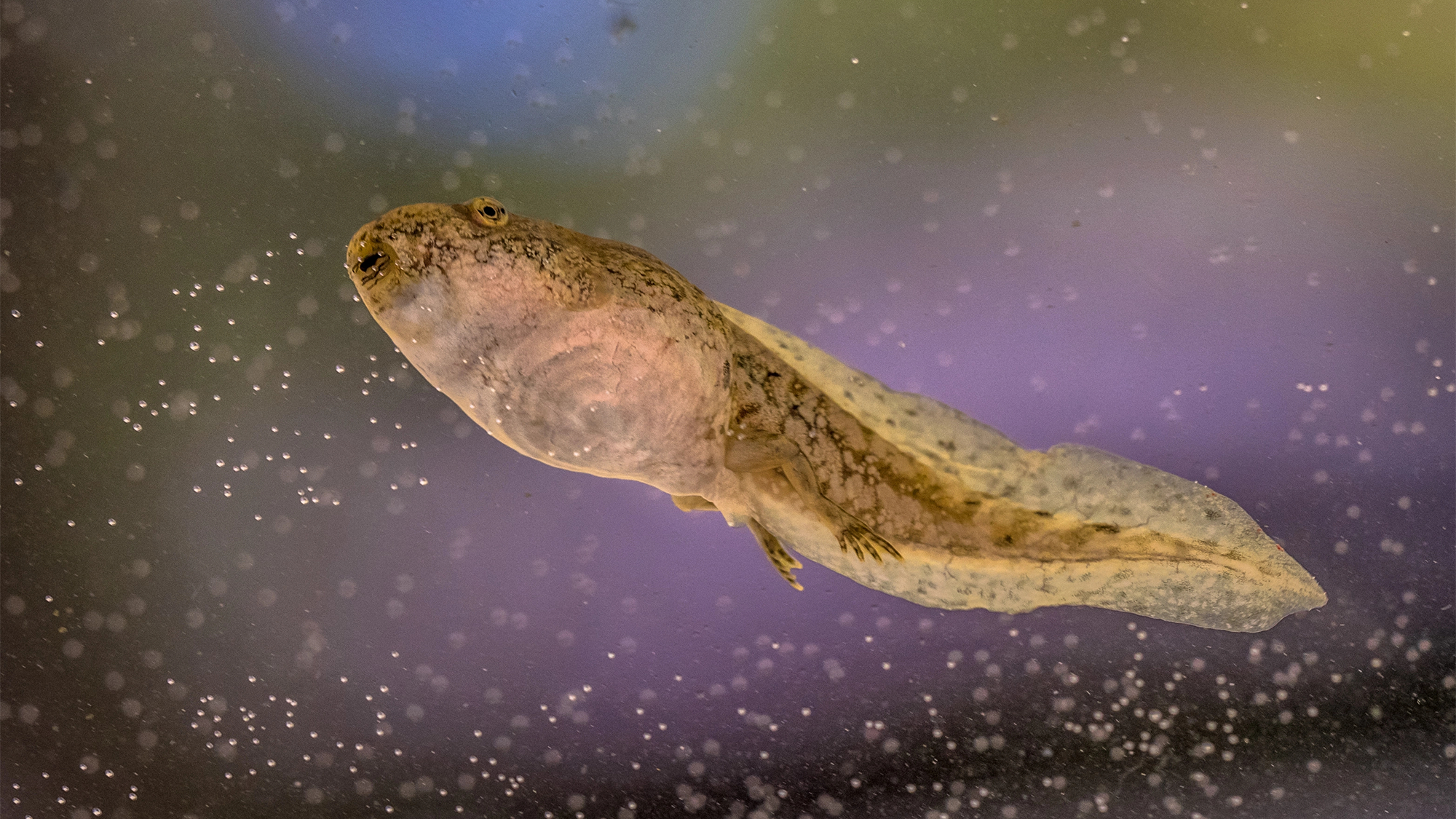

Paleontologists don’t always get what they are digging for. In January 2020, a team from the Argentine Museum of Natural Sciences and the Chinese Academy of Sciences was hoping to find some feathered dinosaurs in present day Patagonia. While they didn’t uncover any dinos, they instead stumbled upon the oldest known fossil tadpole.
“The paleontologists found hundreds of adult specimens of the basal ghost frog, the ancestor of frogs and toads,” Mariana Chuliver, a biologist from Universidad Maimónides in Buenos Aires, tells Popular Science. “After many days of digging, one team member found a stone with a particular imprint on it, and it was a fossil tadpole!”

This 161-million-year-old specimen sheds light on the evolution of frogs and toads. It is described in a study co-authored by Chuliver and published October 30 in the journal Nature.
[Related: Seven new frog species named for their ‘Star Trek’-esque calls.]
Earth’s frogs and toads belong to a group of tailless amphibians called the anurans. The two-stage life cycle–when the aquatic tadpole changes into an adult form–is one of the main characteristics of anurans. Adult frogs are represented in the fossil record back around 217 to 213 million years ago in the Late Triassic. However, tadpoles have not been seen before Cretaceous (roughly 145 million years ago).
In the new study, the team describes this well-preserved fossil tadpole. It belongs to the species Notobatrachus degiustoi and dates back about 168 to 161 million years to the Middle Jurassic. Most tadpoles are only about one inch long, so at almost 6.2 inches long, the fossil tadpole is considered a giant.

In evolution, gigantism is the result of species evolving large body sizes relative to their small-bodied ancestors. Many adult Notobatrachus degiustoi frogs are also considered giants and gigantism has evolved multiple times in anuran history. According to the study, this is one of the few species to have both giant tadpoles and frogs.
“Adult Notobatrachus degiustoi were bulky toads probably with insectivorous feeding modes and closely associated with water bodies,” says Chuliver. “The habitat in which this species lived was probably a shallow pond, which dried out periodically, since it was under variable climatic conditions.”
It lived in these shallow waters among various plants, bivalves, brachiopods, and insects. Notobatrachus degiustoi tadpoles were also filter feeders, pumping water into their branchial chamber and then filtering the food particles. This feeding system is still present in living tadpoles and the fossil is a key piece of evidence that it had already evolved in early anurans about 161 million years ago.
Most of the body and part of the tail are visible in the fossil, in addition to the eyes, nerves, and a forelimb. This suggests that the tadpole was in its late stage of metamorphosis.
[Related: Blind tadpoles learn to see using eyeballs attached to their butts.]
“The most surprising part of this study was when we placed the tadpole under a binocular microscope and observed the exquisite preservation of the gill skeleton and other soft tissues, such as nerve imprints,” says Chuliver.
They were able to see that some of these key features of the tadpole body plan were already present this early in anuran evolution.
“It was incredibly surprising that several features commonly used for staging extant tadpoles were also preserved in this fossil and, therefore, we were able to stage this tadpole,” says Chuliver.
